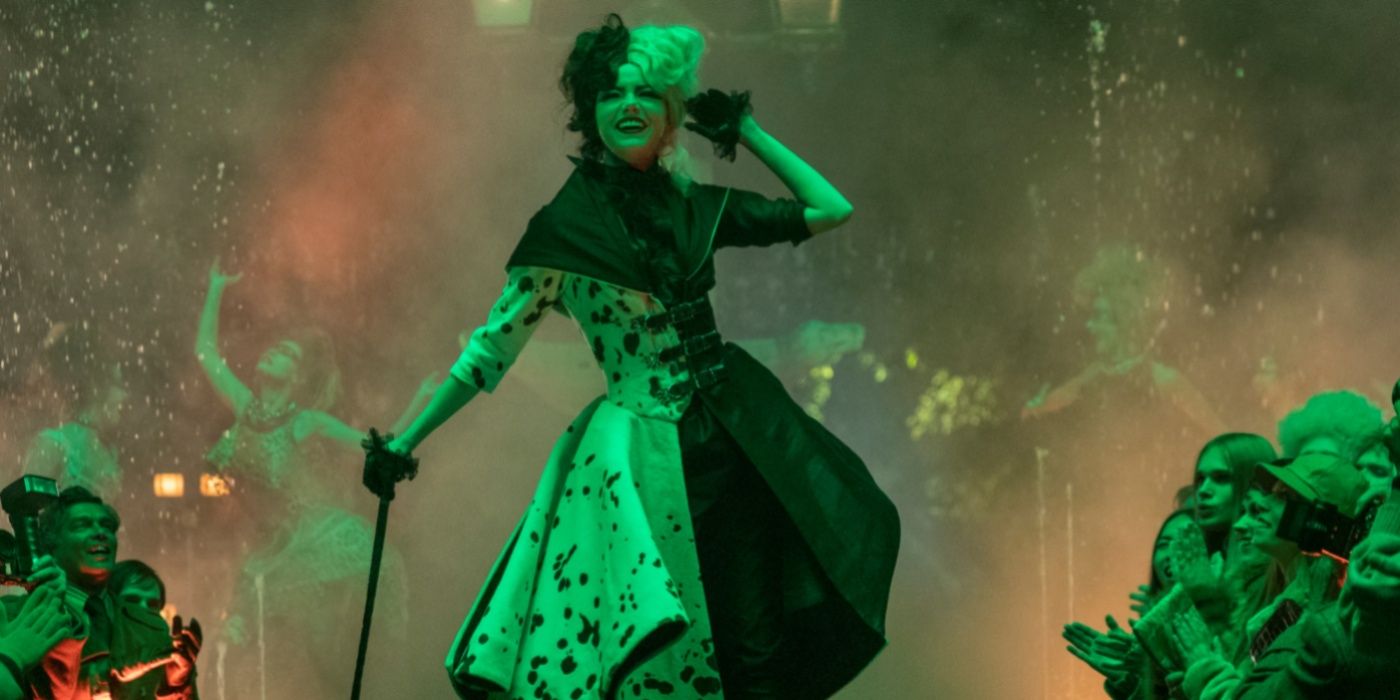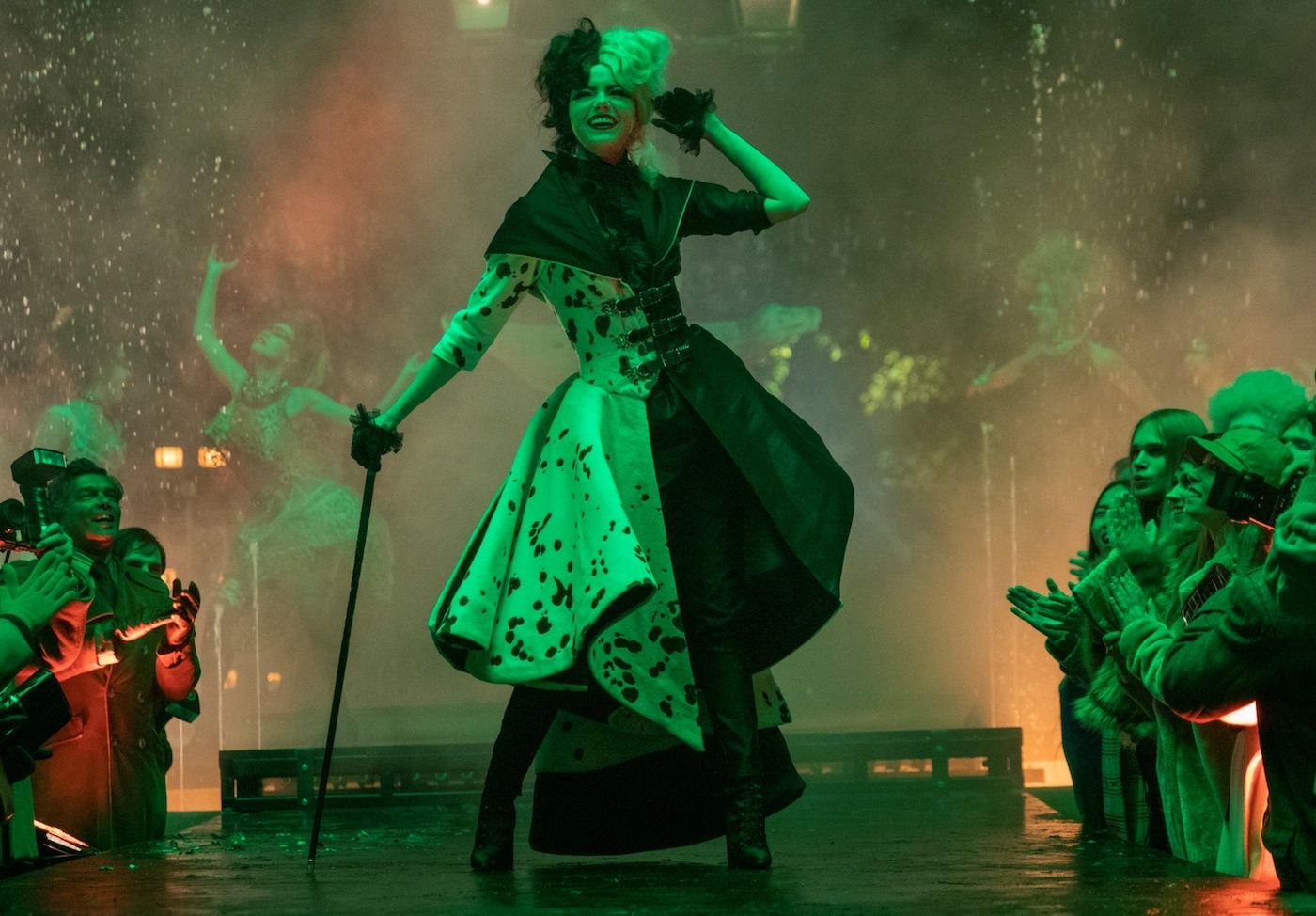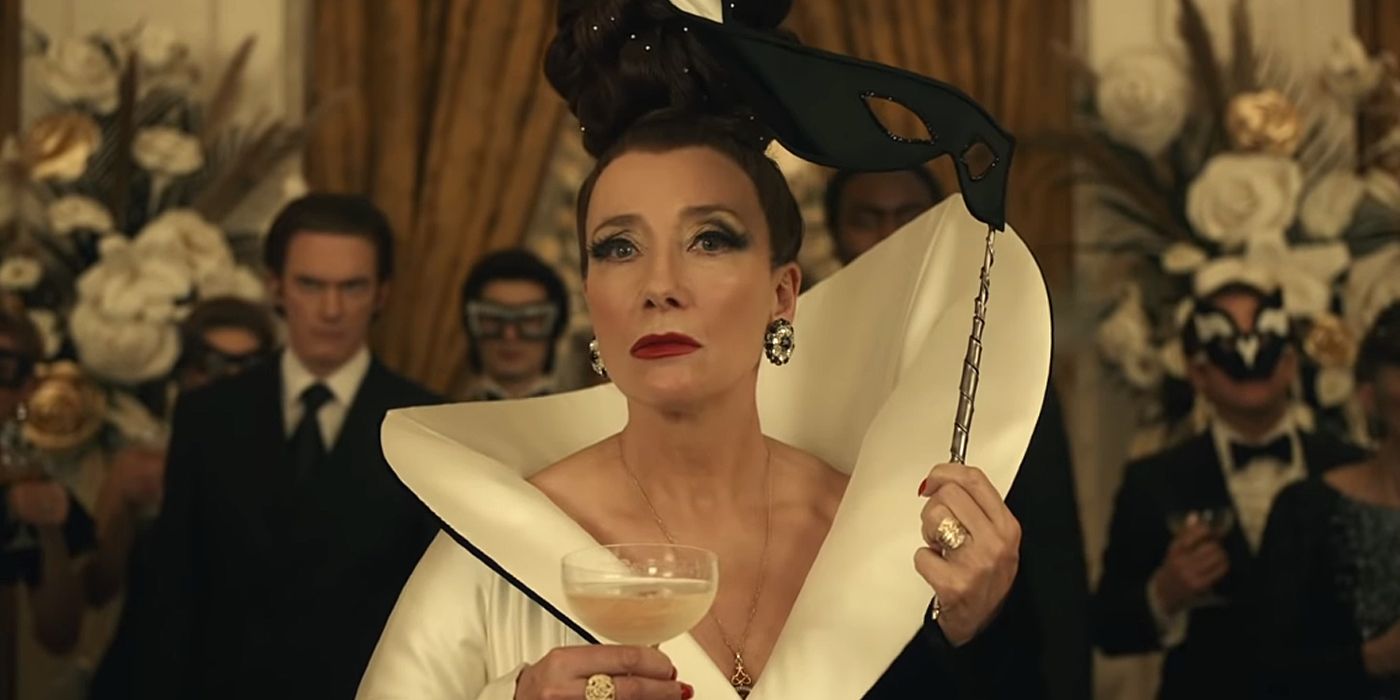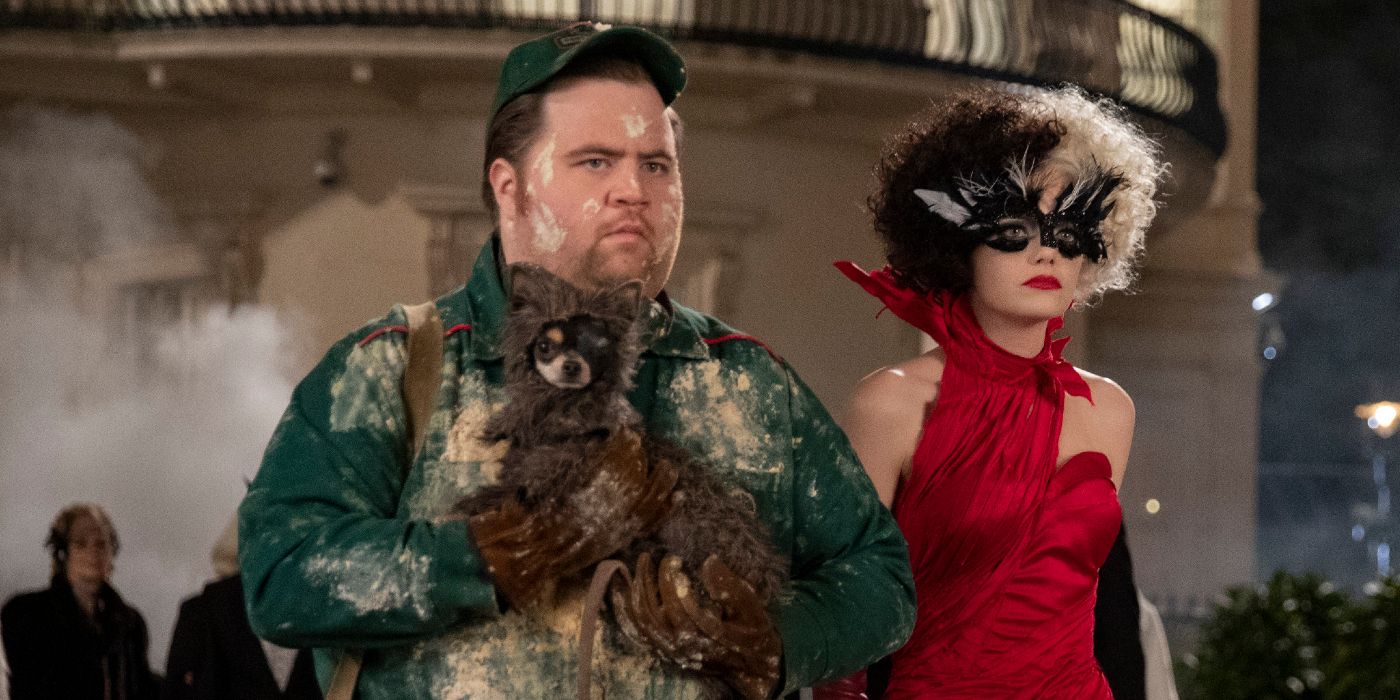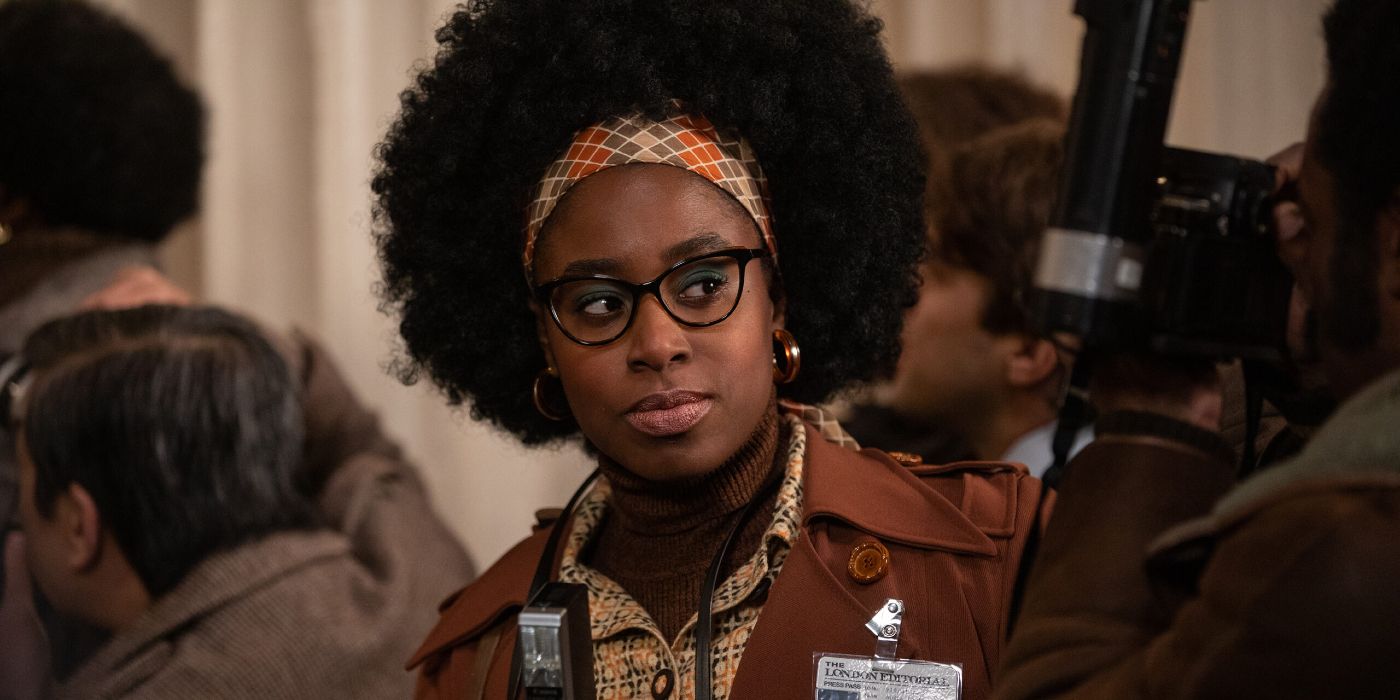From director Craig Gillespie, the live-action flick Cruella explores the early days of one of cinema’s most notorious villains, from her rebellious school years as Estella (Emma Stone) to that of the punk rock-inspired fashionista Cruella. Her flair for fashion catches the eye of the terrifying Baroness von Hellman (Emma Thompson), who puts a series of events in motion, in an attempt to preserve her own legendary fashion empire, that lead to surprising revelations and some wicked revenge.
During a 1-on-1 interview with Collider, Gillespie talked about how this project evolved into a film that he was excited to make, the challenge in finding the tone, why they don’t really have many deleted scenes, how talented the supporting cast was at improvising, when they realized that Wink was stealing the movie, the leeway that Disney gave him, and whether he’d like to see more of Cruella’s story get told. He also talked about why he wanted to tell the story being told in Pam and Tommy, the appeal of the ‘80s set TV series Physical, and making a Chippendales movie.
Collider: Disney likes to turn their animated stories into live-action film and they love a good villain origin story, and this fits into both of those categories. When this project was first brought to you and you heard the name Cruella, what was your immediate reaction to that? Was it something you were intrigued by? Did you want to hear more? Did you have hesitation?
CRAIG GILLESPIE: Yes, yes, and yes. I got a call from Sean Bailey (president of Walt Disney Studios Motion Picture Production). It was crazy. I was actually working on something else and almost about to do another movie, and he called and said, “Hey, are you gonna be doing that film?” And I said, “Why do you ask?” He was like, “What do you think about Cruella with Emma Stone, set in 1970s punk London.” That combination, to me, just sounded amazing. I was very intrigued with that. And so, they sent the script over, and the script wasn’t what I felt that I could excel at. It was a little bit more straight with the narrative and the drama, and I really wanted to infuse this energy and this tone and this playfulness to it. That gave me some pause, as to whether I could actually even get it to that point. I wasn’t sure if I could really get it to a place that suited my sensibility. But then, we talked to Tony McNamara. I was working on a project with him, and Emma had just done The Favourite with him, and Disney was supportive, so he came in and did a rewrite. Once we got that rewrite, then I was like, “All right, now I’ve got a movie. Now I know what I can do with this.”
When that rewrite happened, was the ending what we see now?
GILLESPIE: The skeleton of the movie was there. Dana Fox had really cracked that. That ending was in place and the duality of what was going on. What Tony brought to it was really upping the attitude and the punk vibe of it with Cruella and just that conflict between the Baroness and Cruella. That dialogue and the amount of screen time they ended up getting, he devised that structure where she goes undercover for the second half of the movie, so they get to stay together on screen a lot. That was huge, to crack that. That’s when it’s fun, when the two of them in a room together.
This is such an interesting movie because you’ve got these dueling diva storylines, dueling fashion and fashion shows, dueling dogs, and you’ve got a great bunch of supporting characters. What are the biggest challenges in weaving all of that together, giving it enough screen time without ever overshadowing anything, and also making sure it’s the length of a movie?
GILLESPIE: There’s a lot crammed into that, and it’s probably more than most people expect to be crammed into it. It’s a fast, aggressive way, in terms of storytelling. Even though I give it the luxury of places where we get to have music and I design around the music, the scenes are very economical. First and foremost was really figuring out that character journey for Cruella and the dynamic between Cruella and the Baroness, and tracking what’s going on between them. Then, you get to hang all of this other excitement around it and all of these set pieces on it. The characters have to make sense, as far as what they’re going through emotionally. Once that was figured out, then I would just pile on all of this extra stuff on top and get stuff layered.
Do you have a lot of deleted scenes for this?
GILLESPIE: We don’t have a lot of deleted scenes. I design it. I sit down and shot list with my DP, Nicolas Karakatsanis, and we figure it out. It’s shot to edit. The way we shoot the scenes, we know which shot goes with which shot, so it all comes together. I think there’s one scene with the Baroness where she cuts up one of Cruella’s designs. It’s probably 45 seconds, and we lost that scene. It was modulating the humor in the third act. Paul [Walter Hauser] does so much fun stuff. It was about how much we wanted to keep the gravity of what’s going on versus having these punctuations of humor. That’s the only stuff. There are some jokes from Paul that I loved in the third act, that just didn’t fit the tone of where we were, at that point in the film. He’s such a great improviser that there’s endless alt lines from him.
You have these two characters at the center of your story, that are as big as Cruella and the Baroness are, but you also have a great supporting cast, with Horace, Jasper , and Artie. What did you love about what that trio of actors – Paul Walter Hauser, Joel Fry, and John McCrea – and brought to their roles?
GILLESPIE: The actors are amazing. I really pushed for Paul Walter Hauser because I had such a great experience with him on I, Tonya. And then, Joel Frey came in and audition and just blew me away with his heart and his humanity, but also his dance with humor. And John McCrea was just a revelation to find. We wanted to find somebody that was very grounded and not a cliche, in any way, and who had his own personality. There wasn’t as much on the page for those characters, but they’re all such great improvisers that every opportunity, we would add stuff. The first time they did the birthday cake scene together, I came in that morning and Joel had come up with the guitar and came in singing with the guitar. I gave him a cake and said, “Let’s have this cake be stolen.” And then, there was this whole riff about like the cake being stolen. They all bounced off of each other during the take and it all came alive. That kind of stuff happened constantly, anytime they were together.
At what point did you realize that little Wink was stealing the show, and did you just have to give in and let that happen?
GILLESPIE: It’s funny, we were shooting that scene at the Black and White Ball, and there was a shot of Wink, in the rat outfit and the eye patch, and we’re pushing in on him and he’s growling at the camera. I was just focused on getting the shot, pushing in, and getting the growl at the right time. I stopped and turned around, and the crew behind me was just cracking up. My continuity script person was in tears and I was like, “What’s going on? Did I miss something?” They were like, “No, the shot is just so damn adorable.” He really became a star, at that point. Once he put on that rat outfit, that was it.
We’ve started getting the first glimpses of Pam and Tommy. What made you want to tell that story and what is your goal with that series?
GILLESPIE: The writing is amazing on that. It’s funny, I was just so intrigued with the story and, in some ways, it’s very similar to I, Tonya with the surprise of it. There’s the victimization of the media and what happened with that tape that was such an affront to them, and how it really ultimately severely damaged their personal life and her career. There’s this situation with the public who snicker and go, “Oh, yeah, I know that story. They sold it.” But people just don’t know the story. In a way, it, again makes us complicit, as a society and with the consumption of the media, that we do this without any consideration for the humans involved in it. It does that same interesting thing, where we go in being complicit because we wanna see it and relive this, and then halfway through it, we realize that we’re the problem, as an audience. You really get to land on an emotional human level with Pam, which is what they did so beautifully with the scripts.
I still can’t wrap my brain around the fact that it’s Lily James playing Pamela Anderson. Do you feel like the photos that have been released really have proven any doubters of her casting wrong?
GILLESPIE: I would think so, but that’s just the physicality of it. She’s so done her homework. It’s always a scary thing when you’re portraying somebody that’s a real-life figure that so iconic because there’s gonna be that scrutiny. People are familiar with Pamela Anderson. So, the homework she’s done, in terms of the body language and movement and voice, is incredibly impressive.
I love how visual the work is that you’re doing, from I, Tonya to Cruella to Pam and Tommy, and even Physical and the ‘80s aerobics scene. What interested you in that era and how did you want to approach the whole ‘80s Southern California aesthetic?
GILLESPIE: It’s always the writing first, in every case. The writing from Annie Weisman just had me immediately. It’s a very interesting story of self-loathing with a completely different projection of her persona on the outside, but then with her inner voice. That dichotomy felt very honest and real and fascinating to explore. It was such a tricky time that I was so excited to work on with Rose [Byrne]. And then, all of the other stuff comes secondary. It’s like, “Okay, now I’ve gotta create this world that feels plausible, but doesn’t take you out of the show and still keeps you invested in the characters.” I just love when you’re in that tone. It’s this tone of both having fun with moments of being laugh out loud funny, but then, within the same scene, breaking your heart. I’m just attracted to that writing.
I don’t know what to make of the fact that I now love Cruella, as a character. Do you feel like there is more of her story to tell? Would you like to see her story continue in another film?
GILLESPIE: I feel like we’ve only just met her. I’d love to now see the full-blown Cruella, fully loaded. She’s managed to get the support system around her and she can really expand on her brand. I’d love to see where that takes her and how you could almost destroy her from inside out, if she’s not careful with all that power.
Would you like to be the one directing another story of hers, if that happens?
GILLESPIE: If it was with this gang. It was such a joy to work with everybody, and Tony writing it, and Disney was so supportive. They really fostered a feeling of safety where we could just really go for it without the repercussions. We all were pushing it all the time and thinking, “I don’t know if Disney’s gonna be okay with this,” but they would always call and be okay.
This is also a project where you would want to include references and nods to the original cartoon, but it’s also a balancing act because you want to honor that without overshadowing what you’re doing. How did you handle that?
GILLESPIE: It’s a huge balancing act. I didn’t grow up being an enormous fan of 101 Dalmations. It was always this dance for me because I’m so about the tone and our characters and not compromising them. There were certain things that they would wanna get in the film that were a nod, and I did enjoy that challenge. The biggest one was obviously the puppy killer. I loved what we came up with, which was that in the media, she’s a puppy killer, and she owns it and uses it to her advantage. Whether or not she is not necessarily entirely clear. We know what’s going on, as an audience, but for the public, that’s her persona. I loved the way that we got to create that.
It was announced last year that you’d signed on to do a Chippendales movie with Dev Patel. Since then, Kumail Nanjiani is doing a TV series and there’s a documentary being made. What interested you in telling that story and why do you think there’s so much interest now in it?
GILLESPIE: I dunno. I’ve not yet figured out why I’m constantly attracted to outsiders and misinterpreted misfit characters. That seems to be my thing, for some reason, more than anything. He was an immigrant to this country. I came here from Australia when I was 19, and to New York City and living in a YMCA and knowing nobody. I experienced that beginning, to some degree, to a very different extent, obviously. His story and his journey and the American dream is fascinating to me, and how it imploded on him. That was the interest for me. It gets such a visual setting and it’s one of those stories you can’t make up. Ultimately, how it ends in this tragic way is so surprising. It was so rich. It’s such rich territory for me.
Is it fun to have a little bit of friendly competition, with so many projects on the same subject being developed?
GILLESPIE: I’ve gotten to a point where everybody’s gonna do their own take on it. I know the take that I wanna do and what my interpretation of it is, so I just stay singularly focused on that because that’s my voice. I think there’s room for all of it.
What’s the best part about getting a front row seat to watching Emma Stone and Emma Thompson together?
GILLESPIE: Those guys are such masters of their craft that there’s never a wrong take. They’re just so in control of the versatility that they have. What was amazing was to have that opportunity for them to do it with this writing. That kind of tone is honestly one of the trickier things for an actor to do, and if I don’t have the right actor, I can’t do it. They’re so amazing and being able to do that dance between knowing where the humor is and where the drama and the emotional resonance of the scene is. To see them doing it together and duking it out and playing off of each other that way, was just amazing to watch, all the time. Every time I had a scene with them, it was my favorite day. In terms of coverage, it was just about putting the camera right in front of them. They just hold the screen.
You talked about being surprised at some of the stuff that you were able to get away with without really any pushback on it. Was there ever anything that Disney objected to? Did they ever have any notes on anything, or did you feel like you had a real freedom to tell the story that you wanted to tell?
GILLESPIE: There were maybe a couple of times where they had reservations, and I would shoot it two ways. To their credit, it ended up in the movie, which is amazing. They allowed me to shoot it both ways, so it was really supportive, in that sense. It worked out.
Cruella is in theaters and available to stream at Disney+ Premier Access.

